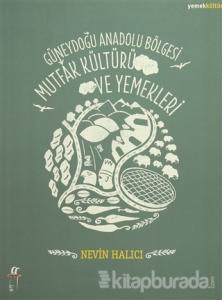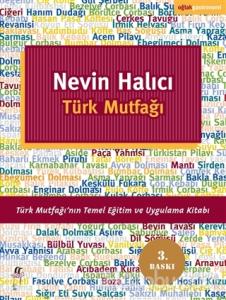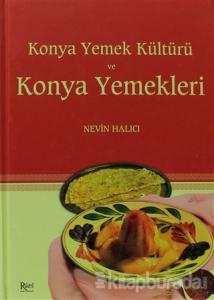Food Culture Of Konya And Meals From Konya (Ciltli)

Konya gastronomy culture and cuisine are the most substantial representative and experienced
example of Anatolian gastronomy culture. The extensive spheres of influence of Konya starts fromÇatalhöyük and bears the traces of ancient clans and tribes found shelter in Anatolia as well as the culturesand civilizations. This culture, having its roots in Çatalhöyük, has been enriched by the Central Asiamigrations, refined by the imperial cuisine of Seljuks and institutionalized by the Mevlevi cuisine. The fineexamples of Konya Cuisine in Sille are regarded and considered as a reflection of the cultural transitionsgoing beyond the distinct historicity and cultures on the food practices. Particularly, three considerationsare required to be highlighted in consideration of the Konya cuisine.
• The first chef de cuisine with a dedicated tomb in the world is Ateşbaz Veli (his cognomen means
“Fireplayer”) who has lived in 13th century and his mausoleum is in Konya.
• Building a team, referring to the initial example of institutionalization of cuisine, has made an
appearance in 13th century in Konya Mevlevi cuisine for the very first time.
• Konya cuisine has certain menus that has become like a rule such as the “team of chefs”, “Karayemek takımı (Black dinnerware)” (a team dedicated for banquets with less than one hundred guests), “ikituzlu bir tatlı team” (team responsible for preparation of savories and desserts), “çebiç cuisine” (a wholelamb kebabbed in a pit dug in the earth, prepared for large banquets), “komşu kaldırması” (kind of a treat tothe neighbor – a Seljukian tradition), “arabaşı cuisine” and “şivlilik” (a kind of feast, when full of dry fruitsand knick-knacks served to children), which is an event dedicated for children.This extensive study, with the second edition, presenting Konya gastronomy culture extending from thedepth of history to our modern times based on the information compiled at the heart of Konya inaccordance with the scientific methods and techniques, serves as a reliable reference for the gastronomyaficionados.
Prof. Dr. Nilgün Çelebi
- Açıklama
Konya gastronomy culture and cuisine are the most substantial representative and experienced
example of Anatolian gastronomy culture. The extensive spheres of influence of Konya starts fromÇatalhöyük and bears the traces of ancient clans and tribes found shelter in Anatolia as well as the culturesand civilizations. This culture, having its roots in Çatalhöyük, has been enriched by the Central Asiamigrations, refined by the imperial cuisine of Seljuks and institutionalized by the Mevlevi cuisine. The fineexamples of Konya Cuisine in Sille are regarded and considered as a reflection of the cultural transitionsgoing beyond the distinct historicity and cultures on the food practices. Particularly, three considerationsare required to be highlighted in consideration of the Konya cuisine.
• The first chef de cuisine with a dedicated tomb in the world is Ateşbaz Veli (his cognomen means
“Fireplayer”) who has lived in 13th century and his mausoleum is in Konya.
• Building a team, referring to the initial example of institutionalization of cuisine, has made an
appearance in 13th century in Konya Mevlevi cuisine for the very first time.
• Konya cuisine has certain menus that has become like a rule such as the “team of chefs”, “Karayemek takımı (Black dinnerware)” (a team dedicated for banquets with less than one hundred guests), “ikituzlu bir tatlı team” (team responsible for preparation of savories and desserts), “çebiç cuisine” (a wholelamb kebabbed in a pit dug in the earth, prepared for large banquets), “komşu kaldırması” (kind of a treat tothe neighbor – a Seljukian tradition), “arabaşı cuisine” and “şivlilik” (a kind of feast, when full of dry fruitsand knick-knacks served to children), which is an event dedicated for children.This extensive study, with the second edition, presenting Konya gastronomy culture extending from thedepth of history to our modern times based on the information compiled at the heart of Konya inaccordance with the scientific methods and techniques, serves as a reliable reference for the gastronomyaficionados.
Prof. Dr. Nilgün Çelebi
- Yorumlar
- Yorum yazBu kitaba henüz kimse yorum yapmamıştır.






